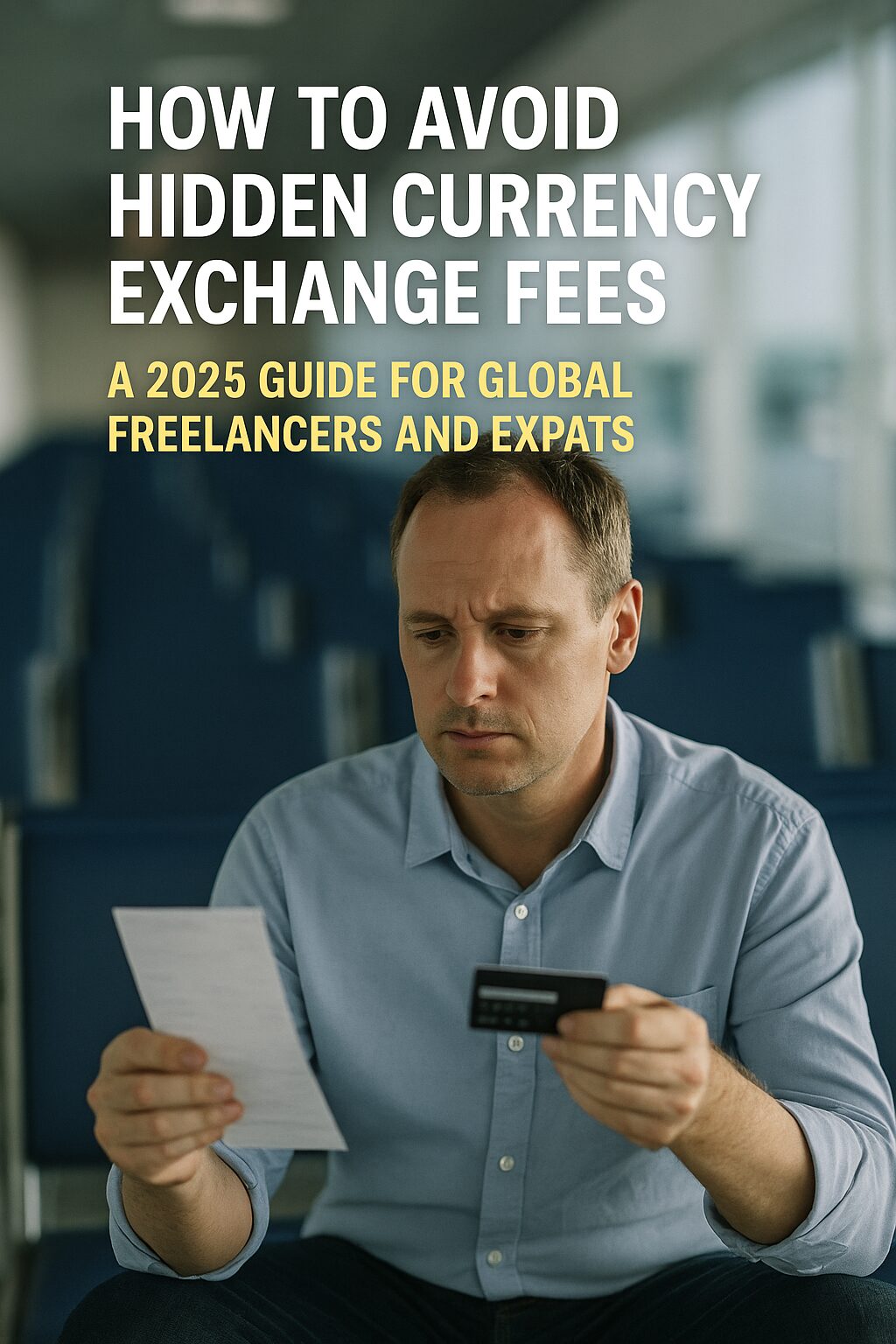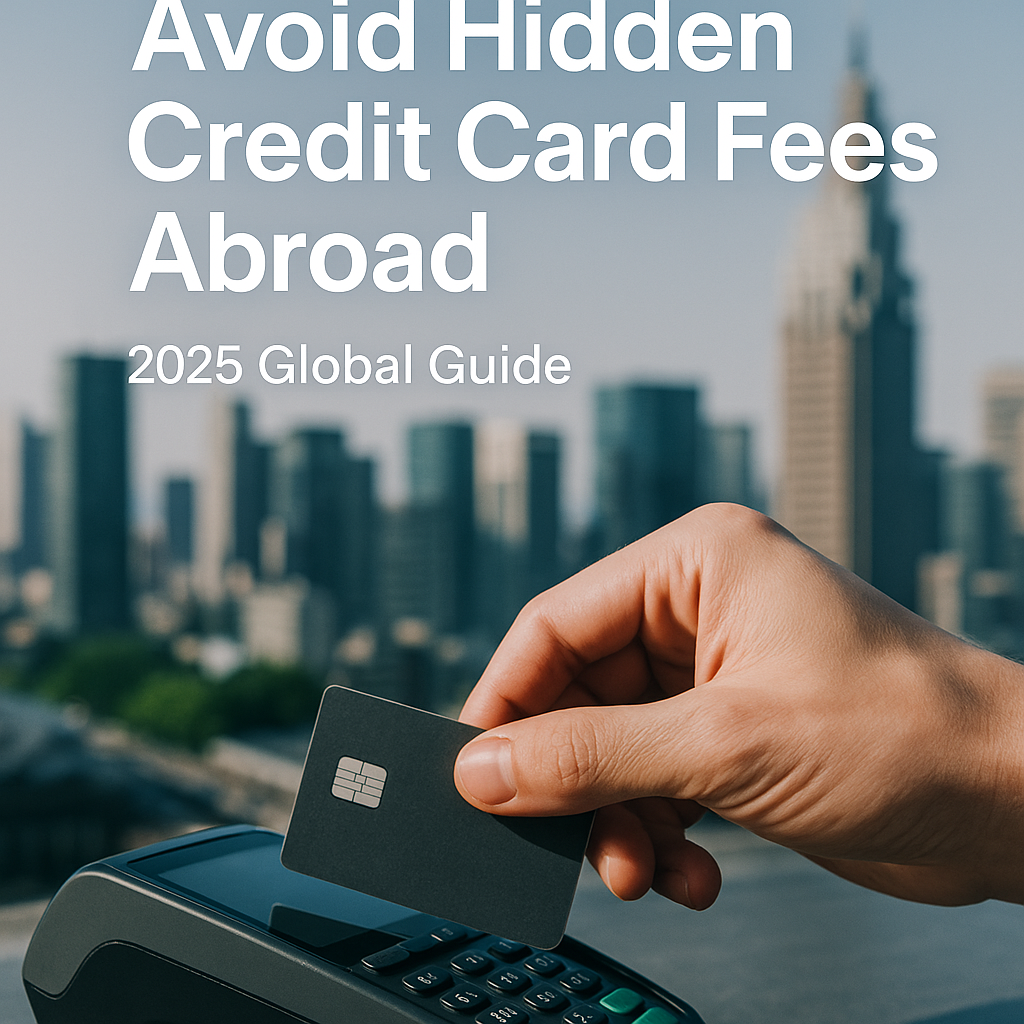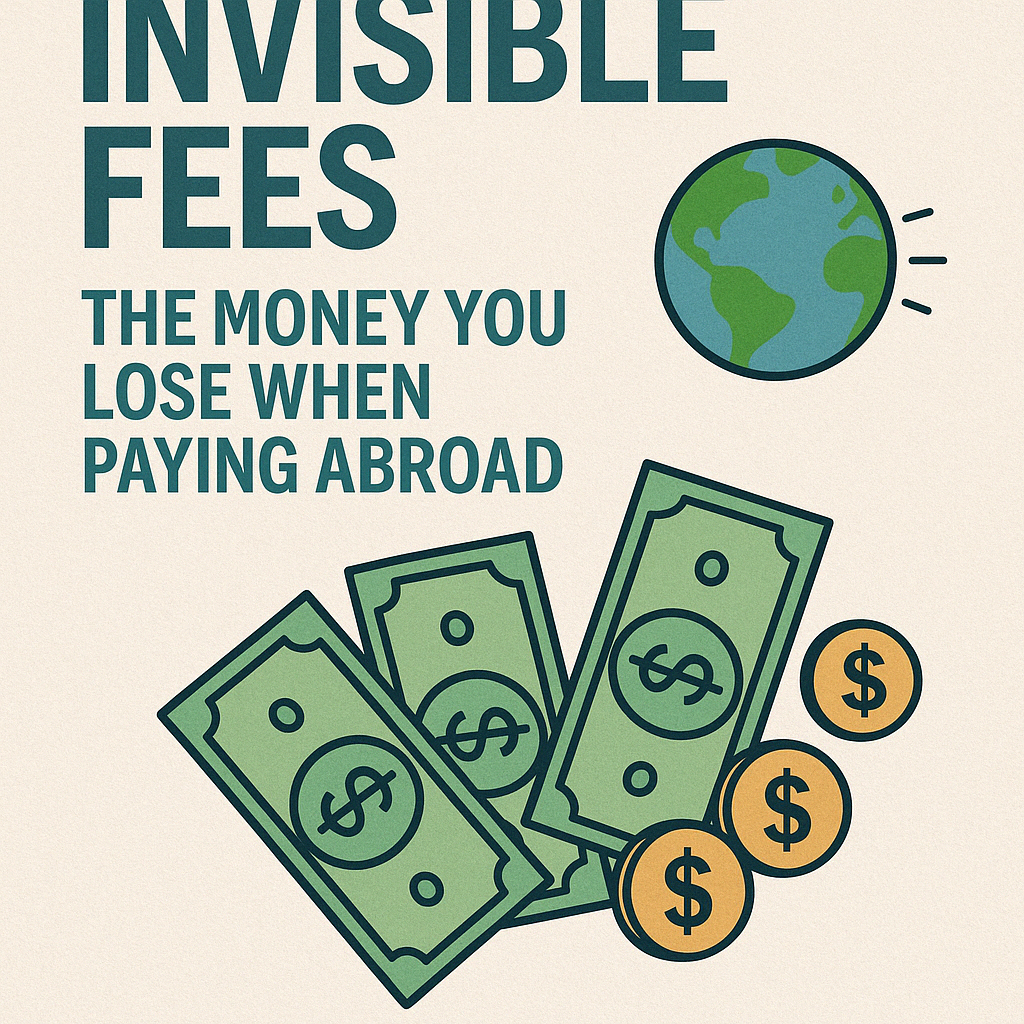Why Most People Lose Money When Exchanging Currency
Every time you send money, withdraw cash abroad, or pay in a different currency, you might be losing more than you think.
In 2025, global workers, remote freelancers, international students, and long-term travelers make payments in multiple currencies every month.
But without a strategy, most people lose 3–7% of their money to exchange rate spreads, ATM fees, and hidden markups.
This guide shows you exactly how to minimize currency conversion losses, whether you live abroad, work globally, or travel full-time.
1. Understand the Real Cost: It’s Not Just the Fee
Most banks and services advertise “low fees,” but the real profit is hidden in the exchange rate.
For example:
- Bank rate: 1 USD = 1.30 CAD
- Mid-market rate: 1 USD = 1.35 CAD
- Real loss: You pay a hidden 3.7% markup
Even when fees look small, the spread can cost you more.
That’s why the “mid-market rate” or “interbank rate” is the only fair reference. Services like Wise or Google show this live.
Rule 1: Always check the real exchange rate before converting anything.
2. Use Multi-Currency Accounts to Control Timing
One powerful way to reduce exchange loss is to hold multiple currencies and convert them only when rates are favorable.
Apps that support this:
- Wise: Hold 50+ currencies, convert anytime
- Revolut: Lock in rates and set alerts
- Payoneer: Accept foreign payments in USD, EUR, GBP
If you’re paid in foreign currency, don’t convert immediately.
Wait for a good rate, then convert a large amount at once.
This simple timing strategy can save hundreds of dollars per year.
3. Avoid Airport and Bank Kiosks at All Costs
Physical currency exchange booths often charge:
- A terrible exchange rate
- Up to 10% markup
- Fixed fees on top
Instead:
- Use your Wise or Revolut card for direct local currency spending
- Or withdraw from local ATMs using cards with no foreign ATM fee
If you absolutely need cash, withdraw from a local bank ATM, not an airport.
Never exchange money at airports unless you’re in an emergency.
4. Match Currency with Spending Region
Avoid unnecessary double conversions.
Example:
- You have USD but need to spend in KRW (Korean won)
- PayPal → USD → KRW → Local vendor = double conversion
Instead, use:
- Wise: Pay directly in KRW
- Revolut: Activate KRW balance and spend from there
- Crypto debit cards (Binance, Coinbase): Can auto-convert from stablecoins
Align the payment currency with your location.
5. Watch Out for DCC (Dynamic Currency Conversion)
When traveling, you’ll often be asked:
“Do you want to pay in your home currency?”
Always say NO.
DCC is a trick that lets local vendors convert the currency for you—at a worse rate than your bank would.
Even if you’re offered convenience, you’ll often pay 5–8% more.
Tip: Always pay in the local currency. Your card will handle the conversion better.
Bonus: Use Tools to Compare Real-Time Exchange Rates
To track live exchange rates and fees, use:
- Wise Rate Checker
- XE.com / Google
- Monito.com: Compare 30+ providers instantly
- Revolut Alerts: Set notifications when your preferred rate is reached
These tools help you delay or switch providers at the right time—turning casual payments into smart decisions.
Conclusion: Don’t Pay to Give Away Your Money
You worked for that money. Don’t let 5% disappear every time you spend.
In 2025, smarter tools exist for anyone to control when, where, and how they exchange money.
If you’re earning globally or living abroad, this isn’t optional—it’s essential.
Your income is already international.
Now make your currency management just as smart.
환전 수수료 없이 돈을 지키는 법 – 해외 생활자를 위한 2025 실전 가이드
당신이 모르게 잃는 돈, 환전 수수료
해외에서 돈을 보내거나, 인출하거나, 결제할 때
우리는 종종 수수료보다 더 큰 손실을 ‘모르고’ 경험한다.
2025년 현재, 디지털 노마드, 해외 근로자, 유학생, 여행자들은
매달 다양한 통화로 결제하고 있다.
하지만 환율 손실, ATM 수수료, 카드 수수료, 환전 마진을 통제하지 못하면
총수익의 3~7%를 매번 잃는 셈이다.
이 글은 실제로 적용 가능한 환전 손실 최소화 전략 5가지를 정리한 실전 가이드다.
1. 수수료보다 중요한 건 ‘환율 마진’
대부분의 은행이나 환전 서비스는 ‘수수료 없음’을 강조한다.
하지만 진짜 수익은 환율에 숨겨져 있다.
예시:
- 은행 환율: 1달러 = 1,300원
- 실시간 중간환율: 1달러 = 1,350원
- 실제 손해: 1달러당 50원 = 약 3.7% 손실
중간환율(Mid-market Rate) 이 가장 공정한 기준이며,
Google 또는 Wise에서 실시간으로 확인할 수 있다.
전략: 환전 전에 반드시 중간환율을 확인하고 비교할 것.
2. 다통화 계좌로 ‘환전 타이밍’을 직접 조절하라
하나의 계좌에만 의존하면 환율이 불리한 시점에 환전을 강제로 하게 된다.
다중통화 계좌를 활용하면 좋은 시점에만 환전 가능하다.
활용 가능한 앱:
- Wise: 50개 이상의 통화 보관 및 전환
- Revolut: 환율 알림, 자동 고정 기능
- Payoneer: 달러/유로 수령 전용
외화 수익을 바로 환전하지 말고, 환율이 유리할 때 대량으로 전환하는 방식이 훨씬 유리하다.
3. 공항/은행 환전소는 절대 피하라
오프라인 환전소는 다음과 같은 비용을 부과한다:
- 매우 나쁜 환율
- 최대 10%에 달하는 마진
- 정액 수수료
대신,
- Wise 또는 Revolut 카드로 현지 통화로 바로 결제
- 외화 수수료 없는 카드로 현지 ATM 인출
현금이 꼭 필요할 경우에는 공항이 아닌, 시내 은행 ATM을 사용하는 것이 가장 안전하다.
4. 지출 통화와 지역 통화를 일치시켜라
불필요한 이중환전은 피해야 한다.
예시:
- USD 보유 상태에서 한국에서 원화로 결제
- PayPal → USD → 원화 → 가맹점 = 이중 환전 손실
해결 방법:
- Wise: KRW로 직접 결제
- Revolut: 원화 잔액 활성화 후 지출
- 암호화폐 기반 카드: 스테이블코인 자동 전환 결제
사용 지역과 지출 통화를 일치시켜야 불필요한 손실을 막을 수 있다.
5. DCC(Dynamic Currency Conversion) 반드시 거절하라
해외에서 결제 시 자주 나오는 질문:
“자국 통화로 결제하시겠어요?”
절대 **‘예’**라고 하면 안 된다.
DCC는 현지 가맹점이 임의의 환율로 환전해주는 방식으로,
공식 카드사 환율보다 훨씬 불리하다.
전략: 항상 현지 통화로 결제하고,
환전은 카드사(또는 앱)에 맡겨야 손실이 줄어든다.
보너스: 환율 비교 툴을 활용하라
환율을 실시간으로 비교하고 최적의 타이밍을 잡기 위한 툴들:
- Wise 실시간 환율 비교기
- Google 또는 XE.com 환율 검색
- Monito.com: 30개 이상 송금 서비스 비교
- Revolut 알림 기능: 원하는 환율 도달 시 자동 알림
이 툴들을 활용하면, 의사결정 시점을 똑똑하게 조절할 수 있다.
결론: 환전으로 돈을 잃는 시대는 끝났다
당신이 힘들게 번 돈이다.
단순한 무지나 방심으로 5%씩 잃을 이유는 없다.
2025년의 금융 환경은 이제 누구나 환전 타이밍과 방식까지 컨트롤할 수 있는 시대다.
지금부터는 글로벌한 수익 구조뿐 아니라,
현명한 지출·환전 구조까지 갖추는 것이 당신의 진짜 수익을 결정한다.


